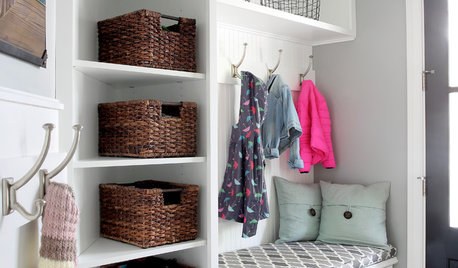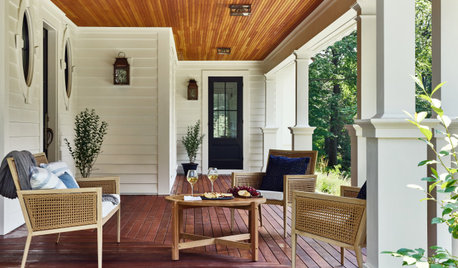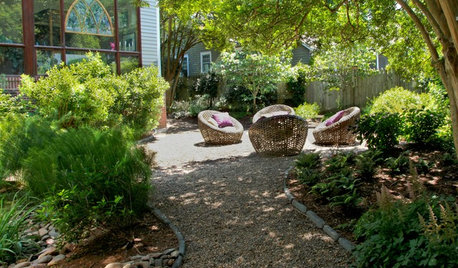Design of drip irrigation system
skyglider
14 years ago
Related Stories

GARDENING GUIDESHow to Install a Drip Irrigation System
Save time and water with a drip watering system in your vegetable garden — a little patience now will pay off later
Full Story
EARTH DAYGrow a Beautiful Garden With Ecofriendly Greywater
Reducing home water waste means lower bills and a healthier planet. Here's how to set up a greywater home irrigation system that can help
Full Story
MOST POPULAROrganized From the Start: 8 Smart Systems for Your New House
Establishing order at the outset will help prevent clutter from getting its foot in the door
Full Story
SAVING WATER6 Reasons Why You Should Save Your Rainwater Now
Collect and store during the rainy season so you’ll have water ready for irrigation when you need it
Full Story
MONTHLY HOME CHECKLISTSTo-Dos: Your April Home Checklist
Kick spring cleaning into high gear, and troubleshoot cooling and irrigation systems for the warmer months ahead
Full Story
GREEN BUILDINGWhat's LEED All About, Anyway?
If you're looking for a sustainable, energy-efficient home, look into LEED certification. Learn about the program and its rating system here
Full Story
ARCHITECTURE15 Smart Design Choices for Cold Climates
Keep your home safe and comfortable in winter by choosing the right home features and systems
Full Story
LANDSCAPE DESIGNEasy Ways to Manage Stormwater for Lower Bills and a Healthier Earth
Send cleaner runoff into local waterways and spend less on yard irrigation with these simple landscaping approaches
Full Story
GREEN BUILDINGHow to Harvest Rainwater for Your Garden
Conserve a vital resource and save money by collecting stormwater for irrigation in a barrel or tank
Full Story
LANDSCAPE DESIGNDitch the Ordinary Ditch: Create a Realistic Dry Creek Bed
Here’s how to turn your water runoff system into an eye-catching accent for your landscape
Full StoryMore Discussions







lehua49
skygliderOriginal Author
Related Professionals
Maple Heights Landscape Architects & Landscape Designers · Brooklyn Center Landscape Architects & Landscape Designers · Aurora Landscape Contractors · Edmond Landscape Contractors · McKinney Landscape Contractors · Apollo Beach Landscape Contractors · Blue Springs Landscape Contractors · Bowie Landscape Contractors · Dallas Landscape Contractors · Gloucester Landscape Contractors · Hawthorne Landscape Contractors · Medford Landscape Contractors · Sun City Center Landscape Contractors · Tehachapi Landscape Contractors · Bellflower Solar Energy Systemslehua49
skygliderOriginal Author
homr
skygliderOriginal Author
tdscpa
homr
skygliderOriginal Author
skygliderOriginal Author
homr
skygliderOriginal Author
LeatherHat